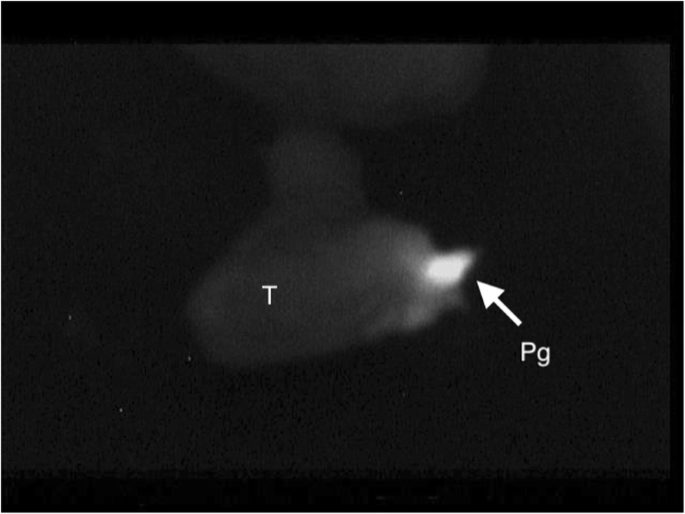Sounds a pretty good idea!
Case report
Open Access
Published: 28 August 2019
Parathyroid identification by autofluorescence – preliminary report on five cases of surgery for primary hyperparathyroidism
Abstract
Background
Intra-operative identification of parathyroid glands is often a challenge for surgeons performing parathyroid or thyroid surgery. Parathyroid glands stimulated by near-infrared light emit autofluorescence, which allows their discrimination from all other tissues in the region, and this may be of value during thyroid and parathyroid surgery. In this study, we present the results of the utilization of a low-cost device developed for the identification of parathyroid glands in surgery for primary hyperparathyroidism.
Case presentation
In 5 patients operated in our hospital with the diagnosis of primary hyperparathyroidism and non-concordant ultrasonography and Sestamibi scan, we used a 780 nm Light Emitting Diode (LED) to stimulate the cervical area. The resulting autofluorescence was visualized with night vision goggles with a 832 nm filter assembled.
In all the five patients, an easily distinguishable nodule was identified and excised, and confirmed as parathyroid adenoma by histological exam. Intra-operative PTH assay showed significant decrease compared with basal values, fulfilling the Miami Criteria for surgical success in use in our institution.
Conclusion
The utilization of autofluorescence for intra-operative identification of parathyroid glands may have a clinical application in surgery for primary hyperparathyroidism, being of special utility when ultrasonography and Sestamibi Scan are non concordant.
Open Access:
bmcsurg.biomedcentral.com/a...
I wonder if it could be exploited during thyroidectomy to help avoid damage to parathyroids?
